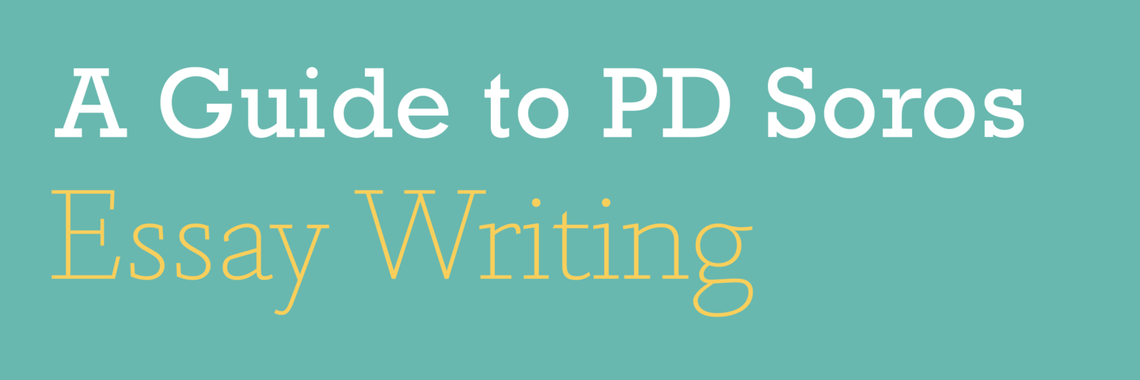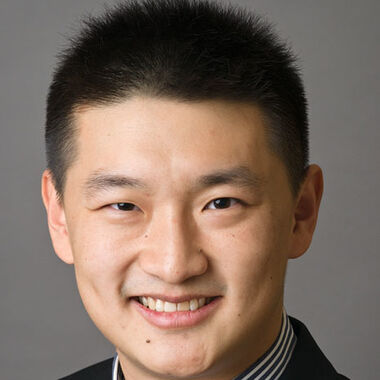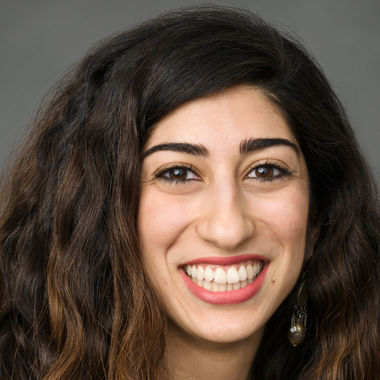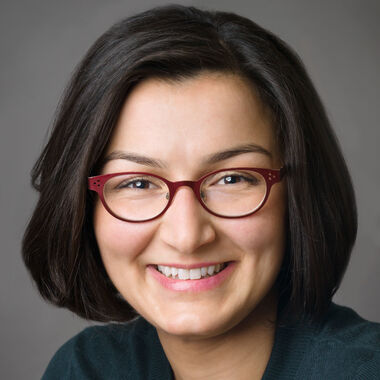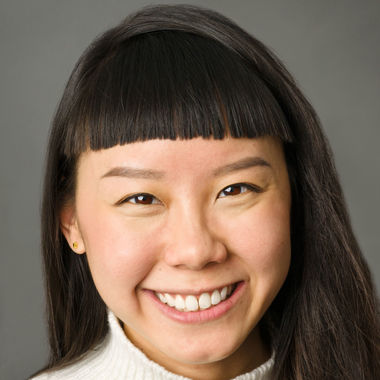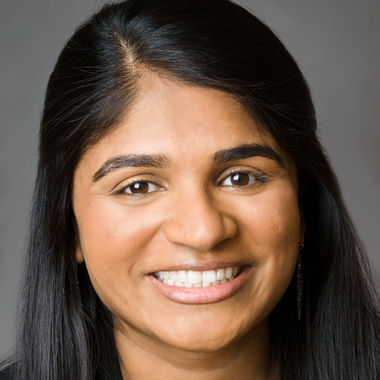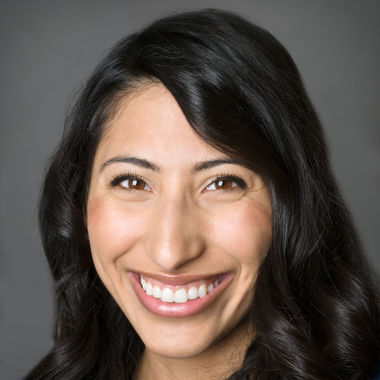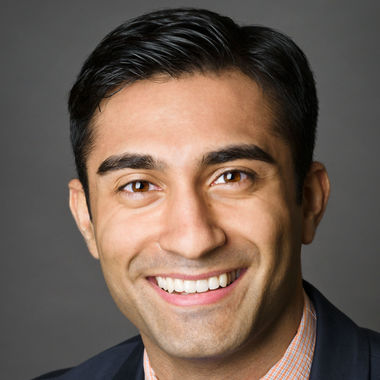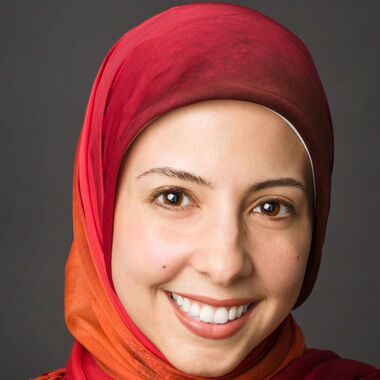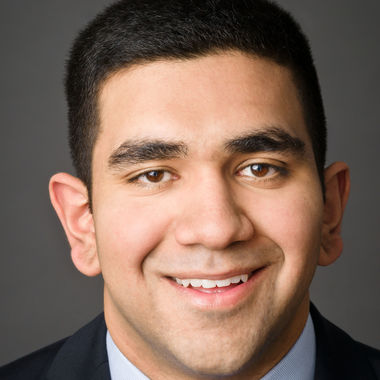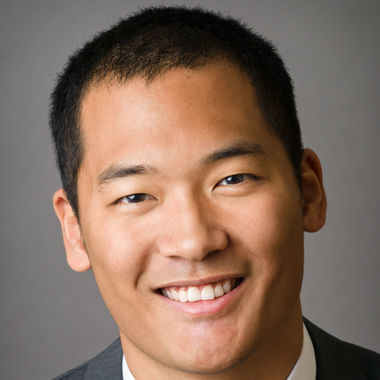P.D. Soros Fellowship for New Americans
If you are an applicant and need to sign into the online application, you can find the link on the "Apply" page of our website: Apply Page.
If you are a fellow looking to login, please note that we are currently updating our backend system for managing Fellow data. In the meantime, to update your information for the Fellowship, please send updates to Nikka Landau at nlandau@pdsoros.org.
Applicant Guide to PD Soros Essay Writing
The Paul & Daisy Soros Fellowships requires two essays as part of the Fellowships application. The essays are an important part of your application—they provide an opportunity to tell the selection team who you are, how you have come to this point in your life and work, and what you hope to do in the future. While your resume and transcripts will tell some of this story, your essays will tie everything together.
In 2016, the essay questions are as follows:
Essay One: Tell us about your experiences as a New American. Whether as an immigrant yourself, or as a child of immigrants, how have your experiences as a New American informed and shaped who you are and your accomplishments? Feel free to discuss how individual people (such as family or teachers), institutions, aspects of law, culture, society or American governance made an impact on your life as an immigrant or child of immigrants. The program is especially interested in understanding and contextualizing your accomplishments, be they personal, professional, or academic.
Essay Two: Tell us about your current and near-term career-related activities and goals, as well as why you decided to pursue the specific graduate program(s) and schools that you have. How do you see your current work and study informing your early career goals? If you have not been accepted into a program yet, please tell us about why you selected the programs to which you are applying.
The first essay is all about your New American experience. Think broadly, personally and creatively. For many applicants, this essay is the first time that they will be writing about their identity as a New American. We hope that this essay is an opportunity for you to reflect on important ideas and experiences, and perhaps, to even learn something new about your family and heritage. Use this essay to tell the selection team about what being a New American means to you; discuss your heritage or a salient experience that relates to your or your family’s immigration story; consider stories, memories, mentors, or lessons that could serve as a window into your world. There is no “right” way to write this essay. As you’ll learn from the advice from 2016 Fellows below, many reached out to family members to think through this essay.
The second essay is similar to a traditional graduate school admissions essay. This essay is more focused on your academic and/or professional work, as well as your field and interests. You don’t need to include a perfectly laid out twenty year plan—the selection team understands that plans change and that graduate school presents a myriad of opportunities and choices that may lead you in different directions. That being said, it is important for the selection team to understand how you and your work stand out. If you are already in the graduate program that you are seeking funding for, you might highlight why you selected it and how it fits into your goals. If you are unsure of what graduate program you will be going to then perhaps you might explain what you are most looking for in your graduate education.
You, the applicant, must write the essays and they must be in your voice and accurately represent you, your ideas, and your experiences. At the same rate, you are welcome to set up a meeting with your undergraduate or graduate school campus fellowship advisor and go over your essays with them. If your campus doesn’t have an advisor, then ask friends, mentors, professors, or colleagues to go over your essays with them. Ask them to summarize the main points and takeaways from your essay for you—are those the main points you wanted to make? Remember, your essays form the overarching narrative that brings your resume and transcripts to life. If you do receive an interview all of the panelists will read your essays so you will need to be comfortable with that as well.
We asked several 2016 Fellows about how they went about writing their Fellowship application essays last year. Here is what we heard:
I found writing the essays the most challenging aspect of the PD Soros application, but also the most rewarding. Before outlining my essays, it was important for me to reflect on my New American experience. To do so, I spoke with my parents and family members about their immigrant experiences in America as well as reflected on my own. I also perused old photo albums and family documents, which was helpful in providing visual stimuli for the themes I planned to write about. After this background work, I sat down and free-flow brainstormed. I drew from my prior reflections and connected those lessons to the themes and ideas I hope to convey in the essay. In this way, I was able to cohesively connect my New American experience to my academic journey, career aspirations, and finally my identity as a Nigerian-American. – Chidi Akusobi (2016 Fellow)
For writing the New American essay, I recommend doing a little bit of soul searching. Talk to your friends and family, have a drink and have some open conversations. Go on a trip to your hometown to see where you grew up. Talk to your parents about stories of how they came to the United States, or ask them about the stories of you growing up. I would recommend starting with free writing. Write down whatever you are thinking about without worrying about anything like structure. You can then pick some stories from these and organize them into an essay. In thinking about meaningful experiences and stories, I tried to think about the positive lessons and larger themes that are important to my life.
For the essay about graduate studies and your future, make sure you write to readers who are not in your field. This is because some people who read your essays will be well-versed in your area of expertise while others will not be. As a MD/PhD student, I wanted to excite readers while also demonstrating my ability and potential. Don’t write the essay like your thesis proposal; rather focus on the big picture. You can show it to your parents and see if they understand them (except if they are scientists themselves!). – Du Cheng (2016 Fellow)
As a theater director applicant I knew that in my essays I would have to excite readers and help them understand why and how I approach my field in a unique and distinct way. I wanted to talk about my vision of theater as a change agent. Because my immigration story and my voice as a director are very much intertwined, those themes appeared in both of my essays. I focused the second essay more on my career path, why I chose my university, who my mentors are, and the contribution that I see myself making in the field. – Shadi Ghaheri (2016 Fellow)
As a PhD student applying to the fellowship, I wanted my second essay to highlight my passion for science and my current work in graduate school. I discussed how my past training has qualified me for graduate studies as well as a general introduction to my current projects. As a scientist, it's really hard to explain what you do in an easy-to-understand format and this was the most challenging bit for me. For my first essay, I focused on my New American experience. To do this, I reflected on the opportunities that have shaped my life and set me on the track to becoming a scientist. First piece of advice: everyone has a unique story. To figure out your story, talk about it to whoever will listen. Second piece of advice: ask people from all walks of life and backgrounds to read your essays. The more people you ask to read your essays, the better off you are writing a piece that will best communicate the essence of your individual New American experience. – Nairi Hartooni (2016 Fellow)
The essays are an important part of the application. That being said, I also used the Optional Exhibits section to highlight my narrative and to convey parts of myself that written language cannot fully encapsulate. – Iris Hu (2016 Fellow)
For both essays, I recommend writing down ideas on paper to brainstorm. Map it out, draw, or do whatever helps you connect your ideas! Then, I like to write down everything in more detail on my computer and later go back and edit multiple times until it's a coherent essay. When I have a complete draft, I let my close friends and family review it to make sure the essay has my voice. I also like to show it to people who are not as familiar with my background to see if I included enough detail to convey my story. Overall, you should be authentic - it's your story and no one can tell it better than you. Don't get caught up in stressing about what you think others want. If you read the fellows' bios, you'll realize there's no "correct" path to being a Paul and Daisy Soros Fellow. It's as simple as sharing your story and what you want to do in life. – Sharada Jambulapati (2016 Fellow)
For the New American experience essay, there are many stories you can write about — consider focusing on a specific experience and building your essay around it. I found it helpful to talk to my family before I started writing my essays and throughout the writing process. It helped keep me centered. I also sought feedback from family members to ensure my essay was representative of me and of my New American experience. For the essay about your future work, make sure your passion, in whichever field, shines through. You can look to your applications to graduate programs as a starting point and expand on how your current work is shaping your journey to — and within — graduate school. – Veronica Mazo (2016 Fellow)
I wrote my essays to construct a cohesive narrative about myself. My cumulative experiences as a student, a professional, and an immigrant have informed my choices and I wanted the selection team to see how all of those components worked to influence my career choices. To be sure, you do not have to know your precise path forward, but writing these essays should give you an opportunity to reflect on where you are going. For me, it was about telling my life story. – Akash Patel (2016 Fellow)
The essay writing process was a much-needed opportunity for hard, honest introspection. I applied to the Paul & Daisy Soros Fellowships after having spent the six prior years living abroad. My "New American" experience was under serious reconstruction and I found it really difficult to find an honest, coherent voice. I started by going through old and new photos, not in any systematic way, but to root my reflection in memory and emotion. I knew that an overly abstracted narrative wouldn't give justice to a narrative with essentially emotional underpinnings. I had several unstructured, reflective conversations over the phone with my mother. She helped me stir up the deeper ideas and find threads of narrative and identify the open-ended questions. I then sat down for two hours and wrote without any consideration for word limit or structure or coherence. The cleanup came later. – Aisha Saad (2016 Fellow)
Writing the essay on my experience as a New American was incredibly challenging. What worked best for me was taking some time to think about how I see myself and my family in this country—what identities do I claim? What communities do I represent? Where did it all start? And how has it all shaped me? After reflecting on these questions, I sat down and wrote for several hours without really thinking about structure or word count. In taking the time to just write and think for a while, I was better able to understand for myself how where I am today and what I care about has been influenced by my family's immigrant experience. It took me several drafts with editing help from several mentors as well friends who knew me well to get to a final product that I was truly happy with. – Mubeen Shakir (2016 Fellow)
In writing my personal essay, I struggled at first because I felt my New American experience was a thoroughly mundane one, which could be found in every corner of the vast suburbs of coastal California. I came to realize that the story worth telling was not so much the factual circumstances of my life but instead how I thought and felt, what I learned, and why I do what I do. That’s what makes it a personal essay. Over the course of a month, I went through three editions of my essay before I was satisfied with the product. Give yourself time in between edits so you look upon the essay with fresh eyes; the same sentence on different days may seem arrogant or confident, naive or earnest, effusive or sincere.
It was much easier getting started on the essay talking about my activities and goals. Describing where I am and what my research is was not so difficult. However, the articulation of why I do what I do and have the goals that I have prompted a measure of self-reflection. I wasn’t able to finish this second essay before I was satisfied with my personal essay, because I realized that my work and ambitions are an extension of who I am as a person. Ultimately, I tried to place my training in the specific context of my personal story and my projects in the broader context of the academic field and its relevance to society. – Yuxi Tian (2016 Fellow)
© 2024
